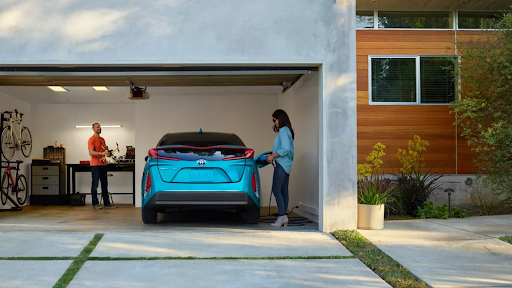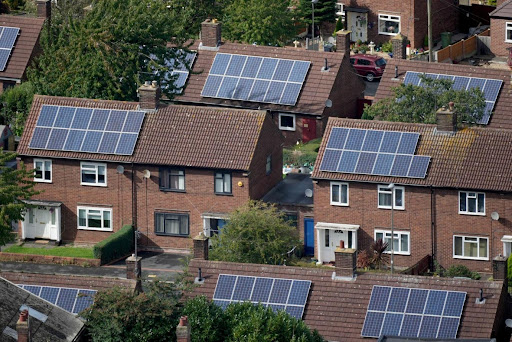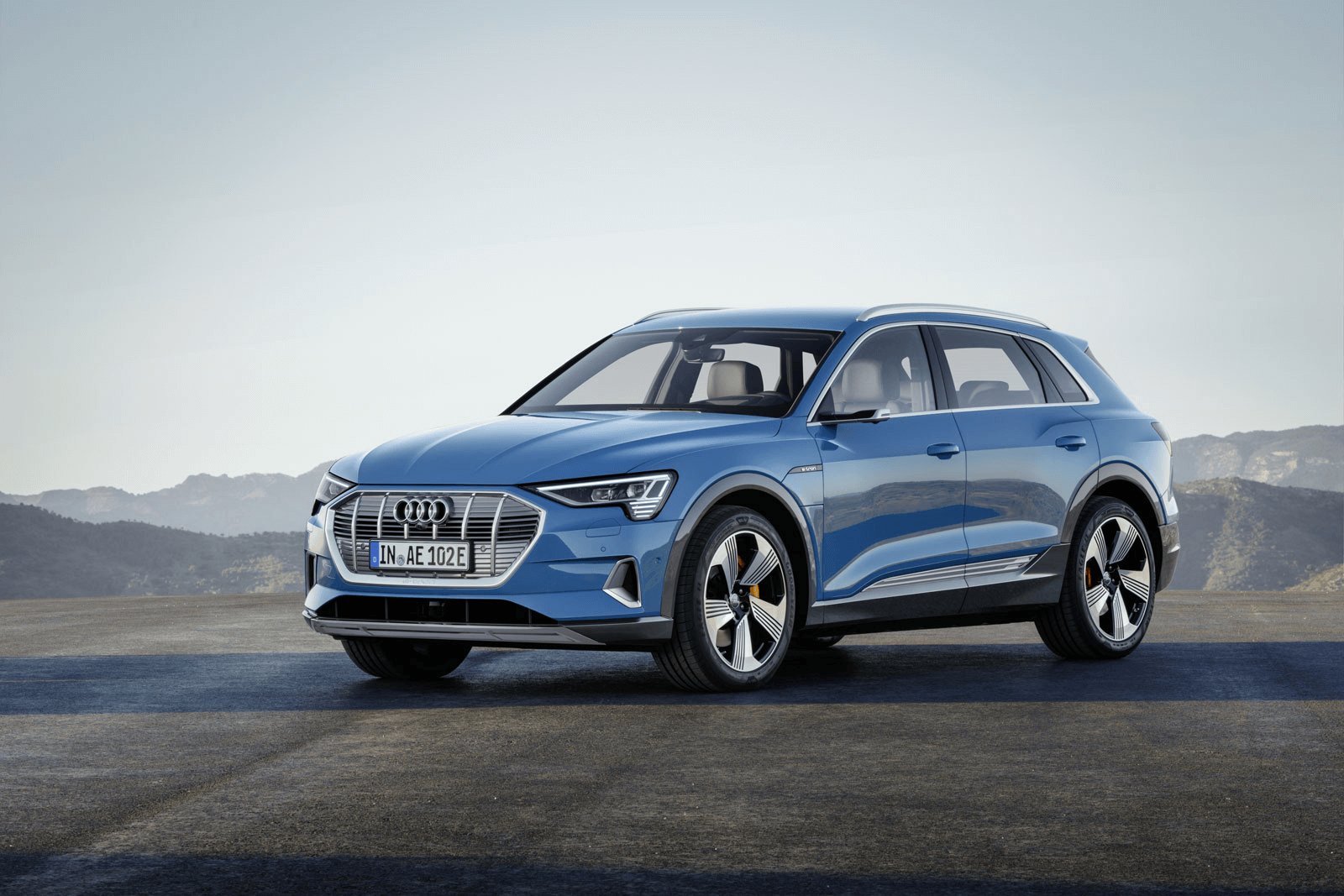
Roman Danaev
If you’ve only owned conventional cars before, you didn’t have to deal with home charging. Charging is one of the most confusing parts of EV ownership. But this guide will make it all clear and teach you everything you should know to successfully charge an electric car at home.
Do you just plug a cord into an outlet? Not quite. So, let’s get started.

Can you charge an electric car at home?
Yes, EC owners can refill at home. In fact, the majority of EV owners charge their cars at home rather than at public charging stations.
The next best investment after buying an EV you can make is to install a dedicated home charger, which provides faster-charging speeds and built-in safety features. There are different options based on your needs and preferences, which we will describe in detail in the later sections.
To make the information slightly easier to digest, we’ll only focus on home charging, assuming you don’t have access to workplace charging.
Can you plug an electric car into a home plug socket?
If you need to, yes. Most EV models are compatible with a regular 2.4 kW three-pin wall socket. But it’s better to keep this option for emergencies or when there are no other ways to charge the vehicle.
The first reason is the charging time. You will simply extend the charging time to 25-35 hours, depending on the car. If you need to charge for a few miles when you’re visiting friends or family, it’s fine. But if you want a full battery, a regular socket is completely impractical.
The second reason is the tripping hazard of running a wire from the house to the car. If you don't have a socket in the garage or at least under a special cover, it’ll be dangerous to leave the wire lying around for such a long time.
Find car finance deals with the best rates!
Get a quoteWhat is a wallbox?

A wallbox is a wall station for electric car charging at home that connects your car to the power grid. It controls the flow of energy, charges about eight times faster than a regular outlet+cable, and can charge your car at a scheduled time.
You can install a wallbox wherever you store your car - in a private garage, an apartment block, an indoor parking lot, etc.
Eligibility for low-emission vehicles grants
You can receive grants from the UK Government, which have been set in place to encourage the switch to electric vehicles. The Office of Zero Emissions Vehicles (OZEV) department offers a vehicle grant of up to £1,500. The best thing is that you don’t have to apply anywhere - the discount is offered directly by vehicle dealerships and manufacturers.
Another grant you receive is through the Electric Vehicle Homecharge Scheme (EVHS). The grant can be up to £350, which is designed as a 75% contribution to the charge point installation costs (the model list is available here). The scheme is currently open to people who own or rent flats or single-use properties.
Key considerations before installing an EV charger at home
There are very few but very important requirements:
- You must own the property or have written permission from your landlord.
- There must be off-street parking (driveway, garage, etc.).
- And finally, there must be a WiFi connection with wide coverage and no connectivity issues. You can use a SIM router for a Pod Point charger.
Should you install an untethered or tethered charger?
In a tethered home charging station, the cable is permanently attached to the station. An untethered station doesn’t have a charging lead and is referred to as “socket only”.
A tethered charger usually comes with a 4-8 meter charging cable for a Type 1 or Type 2 socket. It is the more popular charger type for residential premises. With a tethered unit, an EV owner doesn’t need to do extra work - they can simply unfold the cable and plug it into the car.
The benefit of an untethered charger, however, is that owners can use both Type 1 and Type 2 sockets with one unit. So, it’s popular with households that need to charge both Type 1 and Type 2 electric cars. You will need to purchase the cable separately, but if you carry it with you, you can use it for both home and public charging.
How to choose the right wattage for a wall charger?
The wattage of a wall charge will affect how long your electric vehicle takes to be fully charged. But you can’t simply use the highest wattage possible - it must be suitable for your type of battery.
3.6 kWh Charger
A 3.6 kWh charger is considered to offer a slow charging speed. The upside is that it is perfect for small cars with small battery capacity and suits most EV models.
The empty to full charging time depends on the model: in the case of a Renault Zoe, it will take 7 hours to charge with 3.6 kWh; if you have a Tesla Model S, it’ll take 21 hours.
7.4 kWh Charger
7.4 kWh is the lower threshold for a fast charging category. This is the most common EV outlet for the home and workplace, although it can be too high for many models, such as Chevrolet Bolt (7.2 kWh), Ford Focus EV (6.6 kWh), Kia Soul EV (6.6 kWh), etc. So, make sure to check with your manufacturer’s instructions.
A Renault Zoe will take less than 4 hours, and Tesla Model S will take 11 hours to charge.
22 kW Charger
A 22kW charger ensures extra fast charging. It is particularly useful if you don’t have a lot of time to charge your car (or leave it overnight) or have multiple EVs and want to “share” the plug more easily. But bear in mind that 22kW chargers require three-phase power, which is rare and expensive.
It will take less than two hours to fully charge a Renault Zoe and 5 hours Tesla Model S.
Do all EVs use the same kind of charging plug?
In the section about tethered vs untethered chargers, we briefly mentioned the two most commonly found EV chargers - Type 1 and Type 2. Here is how they differ:
- Type 1 (Level 1) is a standard 3-prong outlet that you plug your small appliances into. It usually delivers up to 2.3 kW (10 A), which charges your car battery for 2-5 miles per hour. The domestic Level 1 charging is cost-effective but can be dangerous if you overload it.
- Type 2 (Level 2) uses 208 or 240 volts of electricity. You might use this type of charging for plugging your clothes dryer or some other bigger appliances. It can charge the battery for up to 25 miles per hour.
You can look up the specifications for your vehicle's charging system in the manual.
How do you know you have three-phase electricity at home?

First of all, let us explain why it’s important to know what connection you have. If you have a single-phase connection, it can severely limit the possible wattage for your charger. The power can be capped at 3.7 kW or 7.4 kW depending on the residual-current device. So, you’d never be able to use your 22kW charger to its full potential.
Look at your electricity supply meter and try to find Tri-Phase, Polyphase, or 3-Phase written on it, or you can call your power supply company whether you have a three-phase connection. It’s better to leave visual inspections (switchboard, service fuse identification, appliance identity) to the professionals.
How much does it cost to install a home charging station?
The average price for a home charge point is £800-£1,500. Sometimes, it includes the cost of electrician services (depending on the seller). The lower-end models are usually equipped for 3.6 kW, and the higher-end ones have higher wattage and additional smart functionalities.
If you install additional devices and systems, such as adjustments to the property, a new fuse box, a solar system, etc., of course, the cost will go up.
The total expenses for the installation will ultimately depend on the cost of your specific home charging unit and whether you used any subsidies (a couple of grant options were mentioned earlier). After you make the initial investment, you’ll only have to pay for electricity (you can view the average domestic electricity bills here), which is much cheaper than petrol.
Charging at home vs at a public charging station
The average UK household energy bill can be calculated based on the charging rate of 12p per kW, so we’ll use that as a reference point.
A public EV charging station is generally more expensive, although the range is +10% all the way to +80%. It all depends on where you are and what wattage the charging station offers.
Camden, Chelsea, and Westminster residents in London have the highest rates - 7.3-13.3p per minute. If you were to use a 7.4kW charger in the daytime, you would pay £30.66, plus a £10 one-off charge. In total, it is roughly 80 p per kW.
You can save on subscriptions and reduce the cost per unit. The best deal you can get is 15-20p.
How to get an EV home charging point installed?
From a customer’s point of view, there is very little work involved. You will need to fill in an online form for the seller/provider. They will explain how to arrange a meeting or a call with an engineer and/or electrician to check the technical details at your premises. The paperwork for permissions and grants will be taken care of for you.
It’s better to be around while the installation process takes place. This way, you’ll help determine the most convenient location for you. You can also ask for a demonstration of how to use your new charging point.
Should you charge your electric car every night?
You don’t need to charge your car every night - the simplest way to approach it is to charge as often as you need to. The three main factors that affect your charging frequency are:
- Your average daily range - The more you drive, the more you’ll need to recharge. Some of the top long-range models are BMW i4 eDrive40 (301 miles), Porsche Taycan GTS (301 miles), Mercedes EQS 450+ (350 miles), Tesla Model S Long Range (405 miles), and Lucid Air (520 miles). Most EVs manage up to 200 miles on a full charge.
- The size of the battery - A typical 60kWh battery takes about 8 hours to charge with a 7kW charger, which is exactly one night for an empty-to-full charge. A larger battery will take longer to charge (10-20 hours), but you will typically last longer. Although bigger batteries don’t always translate to longer ranges (there are many factors in play).
- Battery age - Most EVs use lithium-ion batteries, which tend to store less energy over time. You will still get upwards of 10 years or 100,000 miles of use, but as you get closer to the limit, you’ll need to charge more often.
Safety rules for charging EVs at home
Here are safety precautions before and when you charge your electric car at home:
- Always follow manufacturers’ instructions.
- Buy your cables (and other components) directly from the manufacturer or from reliable retailers. The charging device itself must be installed by an OZEV-approved installer.
- All components of a charging station must be in good working order.
- Don’t charge your vehicle with a domestic socket or extension lead. The station must be suitable for outdoor use.
- Don’t use more than one extension lead per socket.
- If you have old wiring, consult with an electrician about how much load the household systems can endure.
- Make sure the device and cables are out of reach for children, and the outlet is covered.
Getting the best out of your home charging point

There are a few tricks to cut your expenses and optimize your EV charging without sacrificing your family’s comfort.
Lower electricity costs
Review your energy bill, keep track of your charging time, and look up energy tariffs. If you tend to charge your car during the daytime, you might be paying extra. As you might remember from earlier, the average hourly electricity rate in the UK is 12p, but between 11 p.m. and 6 a.m., it’s reduced to 4.99p. The apps for electric cars often have a scheduling feature to help you switch to a cheaper electricity tariff.
Switch to green energy
Switching to renewable energy can help keep a lid on carbon emissions as well as home energy bills. One option is by switching the supplier - Britain's wind and solar farms help to cut £27 from bills per season.
Also, consider becoming a self-sufficient home by installing solar panels on your roof, using a small wind generator or a micro-hydro generator (if you have access to a river or creek).
Manage load on home energy supply
Your vehicle charging station may put an additional load on the household electrical supply. It creates a risk of your total demand exceeding your max available supply.
One way of solving or preventing it is by installing a smart home charger. This small appliance will automatically balance the power that the charging point draws with the rest of the house.
Manage load on the grid
If you see an increasing number of EV owners in your area, you may need to take care of grid safety. If too many owners plug their cars into their charging points, it will cause a demand spike and potentially damage the network.
Talk with your neighbours and discuss your options to reduce the load on the local networks. It can be done by installing smart chargers or setting an approximate schedule.
What are vehicle-to-grid (V2G) capabilities?
Vehicle-to-grid technology enables EVs to give their unused battery capacity back to the national grid. The idea is to let electricity flow from the car to the electric distribution network while the car is parked (which is 95% of the time).
In the UK, V2G chargers are currently on a trial period, only available for businesses. The biggest project for a two-way flow of energy is with Nissan, which joined forces with EDF for the Leaf and EV200 van. Still, it’s an important step in renewable energy generation that can soon become accessible for house installations.
What is vehicle-to-load (V2L) power transfer?

V2L is a smaller-scale version of V2G. This technology allows you to transfer power from your car’s battery to connected appliances and devices. Basically, it turns your EV into a wheeled power source and replaces traditional small electric generators. It serves the same function as the 12V supply that runs your car’s ancillary systems. But instead of only charging smartphones or tablets, it is suitable for electric scooters and bicycles.
A few general applications for V2L are for house appliances, camping, and charging other cars. One of the best examples of V2L adapters is installed on the Hyundai IONIQ 5.
Total costs of charging an electric car at home
Let’s take Renault Zoe, which you drive 25 miles per day, as an example (a 23.3 kWh battery, up to 245 miles, Type 2 connector, takes less than 4 hours for an empty-to-full charge with a 7 kW charger):
- Charging unit: initially, £1,000, reduced to £650 by the UK Government grant
- Installation: £150
- Electricity bill: +£200 to the standard bill (per year)
- Total: £1,000
Final thoughts
Yes, before you can charge your electric car at home, there are a lot of things to consider and arrange. But fortunately for EV owners, many of them are taken care of by your car manufacturer or charging unit seller. Here is what you need to take away from this article:
- You can charge an electric vehicle with a regular home socket, but it’s better to have a wallbox installed (for speed and efficiency).
- You will need to make many decisions - tethered vs untethered, 3.6 kW vs 7.4 kW vs 22 kW, lower-end vs higher-end models, etc. It’s best to consult the company representative and an electrician.
- The installation process is very easy but should be done only by professionals.
- The total costs can amount to £1,000, but it largely depends on your EV and the chargepoint model.
- There are ways to cut down ongoing expenses (cheaper tariffs, green energy, etc.).
Contents
- Can you charge an electric car at home?
- Can you plug an electric car into a home plug socket?
- What is a wallbox?
- Key considerations before installing an EV charger at home
- Should you install an untethered or tethered charger?
- How to choose the right wattage for a wall charger?
- Do all EVs use the same kind of charging plug?
- How do you know you have three-phase electricity at home?
- How much does it cost to install a home charging station?
- How to get an EV home charging point installed?
- Should you charge your electric car every night?
- Safety rules for charging EVs at home
- Getting the best out of your home charging point
- What are vehicle-to-grid (V2G) capabilities?
- What is vehicle-to-load (V2L) power transfer?
- Total costs of charging an electric car at home
- Final thoughts
Latest News
| Total charge of credit | £3,731.35 |
|---|---|
| Total amount payable | £15,731.35 |





